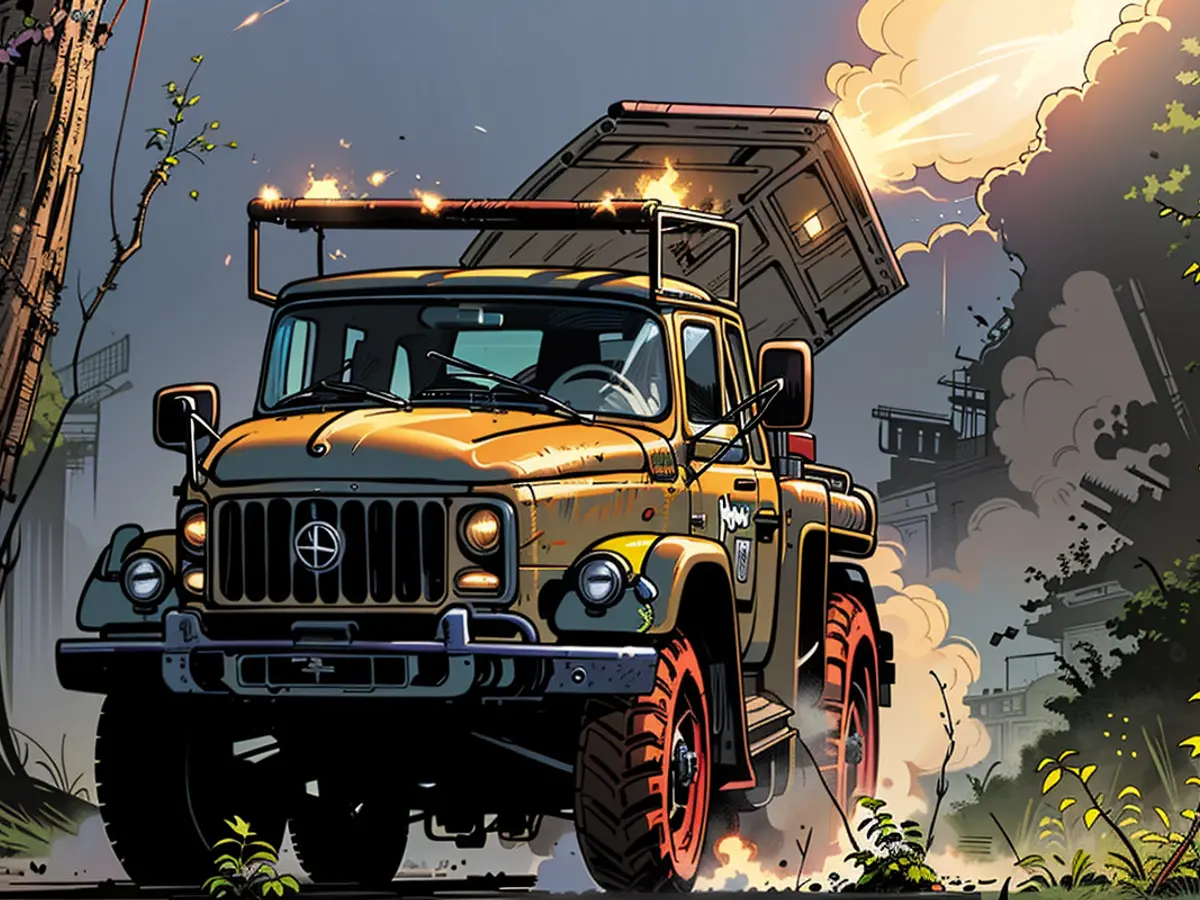"It's apparent that Russia can be impeded or held back"
ntv.de Investigation: Impact of Western Weapons on the Ukrainian-Russian Front
For approximately two weeks now, Ukrainian troops have been permitted to utilize western weaponry against targets within Russia, primarily along the border regions. Markus Reisner, our analyst, will delve into the implications of this decision in the northern zone of the front.
Is this strategy having an impact on the frontline yet?
Various videos are being disseminated by both sides daily, showcasing their activities in the warzone. These recordings indicate that Ukrainian forces are exerting substantial pressure on Russian troops, especially in locations governing logistics and supply lines. Consequently, it becomes challenging for Russia to maintain effective logistics organization.
Should we anticipate this effect becoming apparent soon?
We are already witnessing notable improvements in the areas where the Ukrainian forces have been able to launch these attacks, allowing them to regain the momentum. In other words, they are becoming the aggressors, putting pressure on the Russians to react.
For example, near Lipzy, north of Kharkiv, the Ukrainians managed to implement a counter-attack, which the Russian forces were unable to withstand due to resource shortages. As a result, the Ukrainians have successfully pushed back the Russians over the past 14 days.
However, it remains uncertain how long the supply chains can sustain these disruptions, or if Russia will be able to reorganize and resupply itself over the upcoming days and weeks.
Are these advancements limited to specific sections of the frontline, or can this pattern be observed elsewhere?
A somewhat similar situation is unfolding east of Lipzy, near Vovchansk. Again, following a Russian attack, the Ukrainians counter-attacked, resulting in an unclear situation due to ongoing misinformation campaigns. Nonetheless, images we have obtained suggest that Russian forces have advanced but are possibly under heavy pressure from the Ukrainian side. Additionally, the Ukrainian forces are reportedly using western weapon systems to attack Russian logistics lines. Most recently, a video emerged from the Vovchansk region displaying the deployment of GBU-39 Precision Bombs, a western air-to-ground weapon designed for comparative results to Russian air-to-ground bombs.
Do these advancements amount to significant changes in the overall situation, or are they merely partial successes?
At the moment, the frontline has stabilized in several areas. The Russian advance at Sumy is marginal, and they haven't gained any territorial control. The Ukrainian troops have effectively stopped the Russian offensive in Kharkiv and brought it to a halt. Therefore, it's plausible that the extensive use of ATACMS and HIMARS rockets has made such an impactful impression that the planned Russian offensive has yet to materialize.
What do these developments imply?
By observing the current situation, we can ascertain that Russia's offensive can be thwarted if the West truly commits to engagement. Unfortunately, the situation remains dire before supporters of Ukraine gain the realization that urgent action is required. Once they act, feel relieved, but fail to acknowledge that success must be sustained. For the achievements of the past two weeks to endure, aid must not be withdrawn in the future.
Can maintaining the current level of support be sufficient?
From a military perspective, rapid deployment of various weapon systems would be necessary to overwhelm the Russian defense, leading to substantial victories. Ukraine is in dire need of numerous, top-quality munitions. Anything lacking must be supplied.
How critical is timing?
Extremely critical. It is not sufficient if massive support is only provided when the situation becomes dire for Ukraine or when it is unfavorable for them. These weapons should be continuously supplied to Ukraine, not just during crises, but also during favorable circumstances—such as the current situation in the Kharkiv region. Here, western weapons can be deployed against targets within Russia.
How is the situation developing in Donbass? In this region, Russian territory is not directly involved, but the frontline is situated more towards the center of Ukraine. For an attack on Russian territory, longer-range weapons would be necessary for the Ukrainians.
In Donbass, we have yet to observe the positive impacts seen in the north. Nonetheless, the Russians continue to advance between 200 and 500 meters daily, engaging in trench warfare tactics. The pressure on the Ukrainian defense forces remains intense, and the advancement persists. In Otscheretyne, the Russian bridgehead in the second line of Ukrainian defense has expanded steadily over the last month.
What would the consequences be if the Russians manage to break through here?
A significant breach could endanger Ukraine's supply routes. A critical supply route, located just a few kilometers northwest of there, would be at risk if the Russians seize control. This would effectively lead to a disruption in the Ukrainian resupply of all essential supplies. That's why the fighting is intensifying on both sides in this area. At Tschassiw Jar, the situation is also becoming increasingly alarming as the Russians are relentlessly attempting to cross the Donbass Canal. Unlike the Kharkiv region, the Russians are making progress at various sections of the frontline in Donbass.
Are the Ukrainians not launching attacks against Russian logistics beyond the border?
In our current observations, we're not discovering any substantial signs of stress among Russian troops stationed in Donbass. For instance, photos of detonating ammo dumps, ruined Russian command centers, or flaming railway yards are nowhere to be found. Rostov on Don, Voronezh, Kursk - these strategic hubs act as central distribution and shipping points for Russian resources headed to the frontline. Strangely enough, there's no sign of any hostilities at these locations. Comparatively, during the summer of 2022, the nearly notorious HIMARS effect was evident, where numerous documented attacks on Russian supply routes and depots occurred.
When it comes to drone strikes on Russian infrastructure, the Ukrainians only acknowledge their successes. Unfortunately, these successful incidents, such as the explosion of a munitions depot or a refinery, are scattered and we can't determine their long-term impact on the supply lines for the front. Since we don't have a backstage pass, it's challenging to ascertain whether Russian offensive actions are decreasing due to such infrastructure attacks in the Donbass region. We must simply be patient.
On the other hand, Ukrainian emphasis seems to be centered on targeting air defense positions using ATACMS- and HIMARS-rockets, Russian S300- and S400-systems. The ultimate goal is to create a friendly environment for future deployments of western F-16 fighter jets. The fewer air defense systems Russia has at its disposal, the greater the chances for the now well-trained Ukrainian pilots to survive their deployment. The same objective applies to attacks on airbases in Russia. If aircraft are destroyed there, they will no longer be available for combats against Ukrainian jets in air-to-air combat. It appears Ukraine has made a significant investment in these precision weapons with their scarce resources.
Interview with Markus Reisner by Frauke Niemeyer

Read also:
- Amidst the ongoing debate on arms deliveries, the use of Himars rocket launchers by Ukrainian forces has reportedly disrupted Russian logistics and caused significant pressure on their supply lines, as demonstrated by the successful counter-attack near Lipzy.
- The debate on arms deliveries to Ukraine has gained momentum following the impact of Western weapons on the frontline, such as the use of Himars rocket launchers, which have led to advancements and regained momentum for the Ukrainian forces, but the long-term sustainability of this support remains uncertain.








